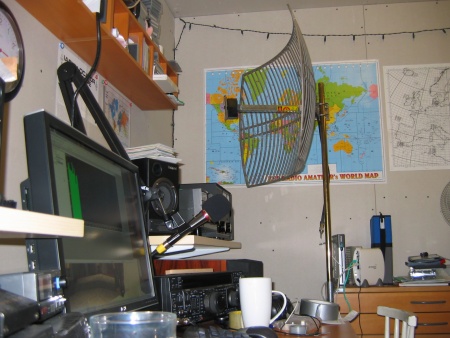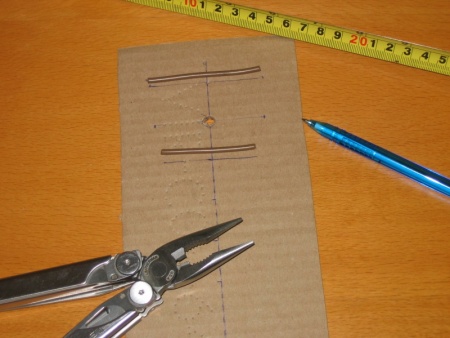Last year, I became inquisitive and managed to take apart one of my Andrew Grid Dishes. They’re rather well made so it takes some patience and some sharp Stanley blades – along with an excellent first aid box! I nearly cut my finger off. Not the first time. My original intention was to replace the feeder directly with heliax to trim down the losses but looking at how they assemble these in the factory, I needn’t have worried.
You will see from the pictures (see link below) that these dishes are well made. I wonder what the goo that completely blocks up the tube that supports the dipole centre? It’s clearly some sort of water seal and I must say it’s completely over the top. It took a heck of a struggle to get the coax out.
These dishes are shipped in two halves along with the coaxial dipole mounting centre that bolts to the grid from behind. It’s possible to get the polarisation incorrect from the beginning. Notice in the picture that this one is vertically polarised. To change polarisation, you DO NOT change the plane of the dipole feepoint, instead you must rotate the dish through 90 degrees. Note that all fasteners are imperial dimensions, not metric. Don’t start losing nuts and bolts if you live in a metric country.
With a 23dbi gain and an 8 degree lobe of RF pointing in the appropriate direction, this is a serious bit of kit but please use low-loss coax; LMR-400, Westflex or if you must, RG213. Don’t use RG58, this is actually very HIGH-loss coax and shouldn’t be sold as low-loss at all. The losses at 2.4GHz are tremendous and you could easily see most of your signal wasted in the coax. The dish is terminated in an N-Type connector on a flying lead with RG-213 type coax. Point-to-point, you probably can’t do better unless you start to spend astonishing amounts of cash.
James and I will try and give a pair of these a test in the summer from Monument hill to the Scout hut – about 10 miles. Apparently a breeze. The world record is for an un-amplified signal is something like 150 miles!
Callum.
I found my old article recently regarding my home-brew Power Over Ethernet Project. James and will shortly be putting internet at the Scout Hut around one mile away and having my router as close to the antennas as possible will be mandatory. Here’s an old project that I wrote up in 2009:


